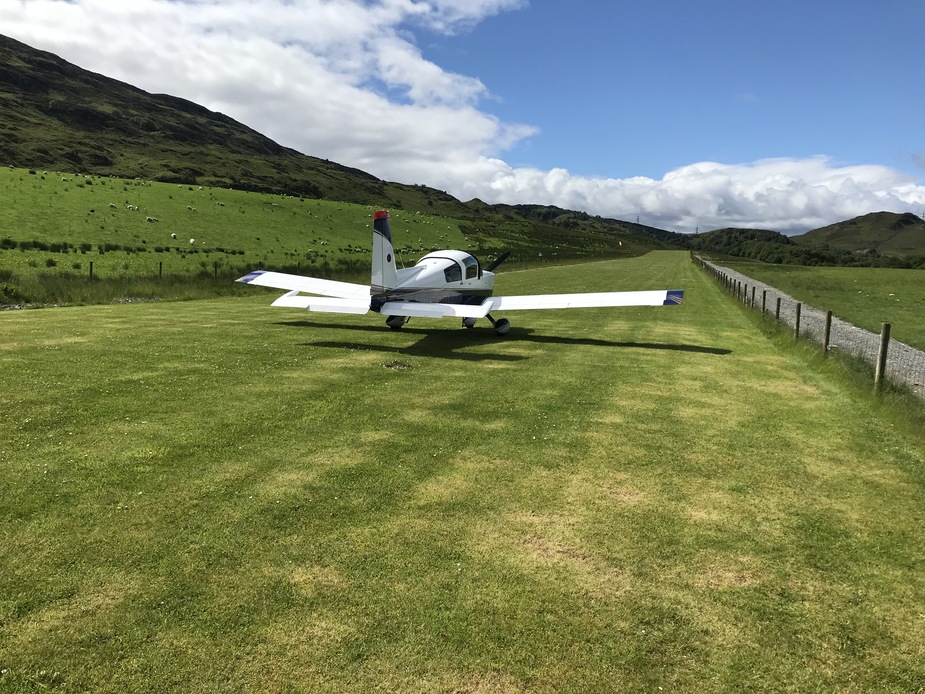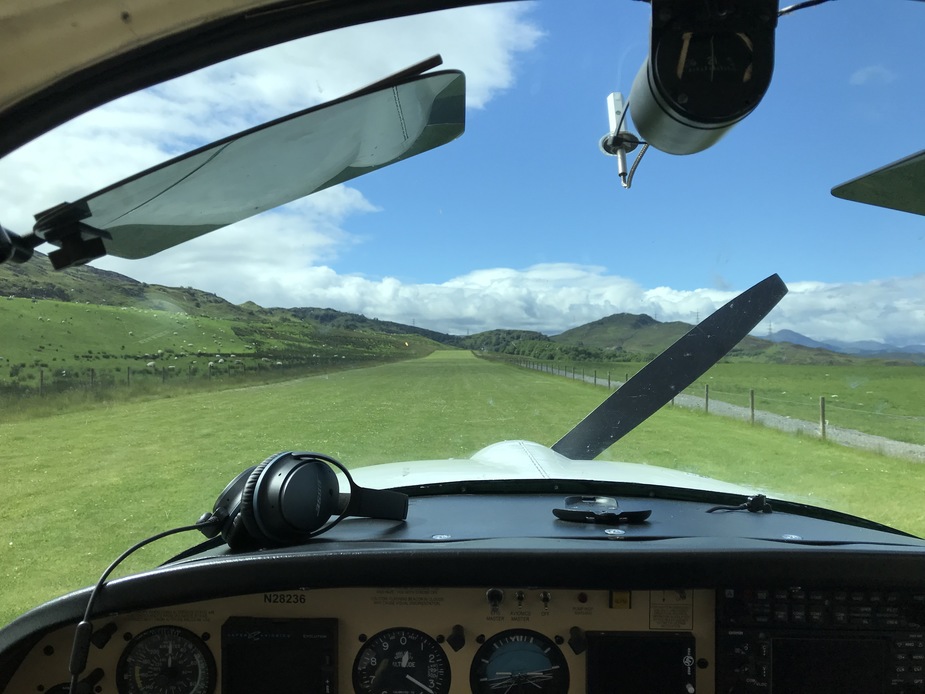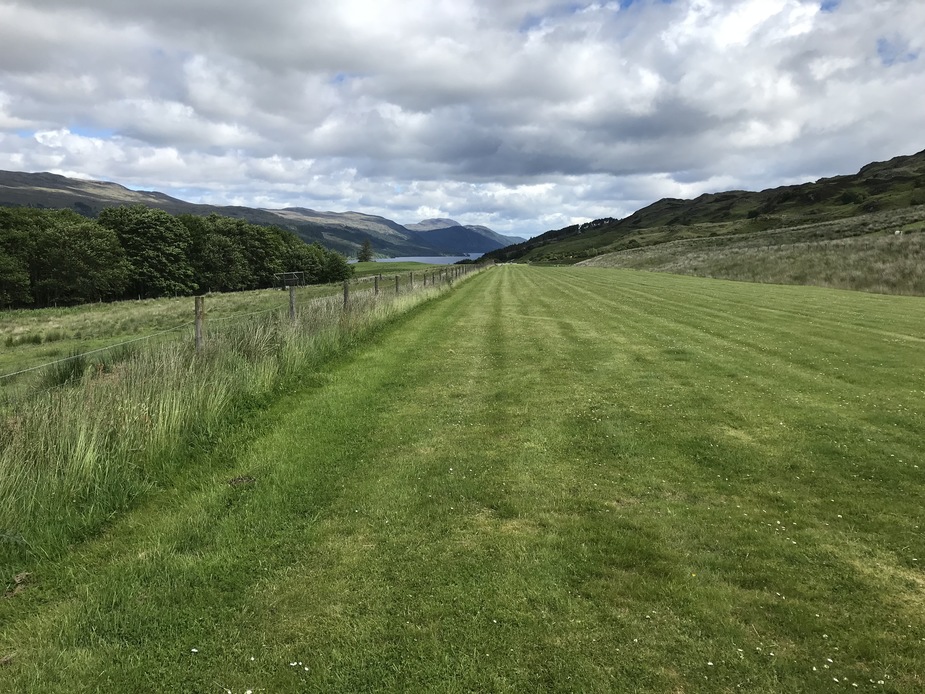Gradient is basically Tan(Angle)=elevation/base or Sin(Angle)= elevation/hypotenuse depending how you like to define it, Radians(Angle) = arc/radius, in small angles all should be close enough to get mixed and work as accurately as “1:60 rule” (or 1:57  ), for angle = 20deg, radians = 0.35, gradient = 36% or 34% depending if you use base or hypotenuse, with “1/60” aproximation you get 30% gradient which is not bad
), for angle = 20deg, radians = 0.35, gradient = 36% or 34% depending if you use base or hypotenuse, with “1/60” aproximation you get 30% gradient which is not bad
Yes gradient is not the same as radians for large angles, you need proper calculations (but anyway that simple relationship go south way before 20% gradient for a different reason)
My home runway has a 1.1% slope, and this has a noticeable effect on takeoff performance. I haven’t done the math, though after about 5000 landings and takeoffs on it in many types over the last 30 years, the 5% and 7% effects per percent of slope which AeroPlus mentions sound about right to me. I will accept a five knot tailwind to go down hill, though an additional factor in the decision is that I have lower obstacles at the west (downhill) end of the runway, and open fields to abort into if it goes really wrong, where an east (uphill) departure offers me higher/closer obstacles and few choices for a forced landing in the case of an EFATO. The direction decision may be based on obstacle EFATO factors, as well as runway slope and winds.
Interestingly, experience has shown that my decision should be somewhat type factored. My 150 and taildragger flying boat are more affected by the slope than the 182RG or 180HP taildragger I borrow home from time to time. They have the power to get up and out, so spend less time trying to climb up the slope, and thus being effected by it. Landing is the other way around, landing the 182RG (with its smaller/high pressure mainwheels) is un nerving, as it just doesn’t want to stop – I have to get it on the ground shortfield early, so I can get aerodynamic and wheel braking in early. The 172 taildragger, on the other hand, is on big tundra tires, and will STOL in either way easily. (But it doesn’t go as fast as the 182RG  ).
).
I use to fly in and out of a private runway with a 3.5% slope for 700 feet at one end (under the hydro wires). So you had to either land low under the wires, then uphill as you touched down, or over the wires long then short landing after. To land with the full length under the wires, it required quite a technique to change your several percent approach angle to a 3.5% climb just to be parallel to the surface to flare to land. I used to land over, to avoid needing to do this, as I could happily stop on the remaining runway that way. However, this afforded the opportunity for practice with a 3.5% uphill takeoff under the wires. The 150 would do it, but you sure cold feel the performance loss!
Bottom line is that factors should be understood as applying to the type, as it will be a little different type to type. If the manufacturer offers factors, use them with conservatism!
Here’s an example at Glendoe airstrip last summer, at the end of Loch Ness. It has a slope but the exact gradient was unknown. Landing in our AA5B was uphill on 21 with a light westerly headwind and the aircraft stopped easily without braking in little more than half of the 650m available:

By departure time in the afternoon, as anticipated the wind had strengthened to circa 10 kt out of the west. Although the calculation, based on an estimate of gradient, dry grass etc., suggested an upwind takeoff was possible, there are obstructions and terrain out to the west:

The downwind/downhill calculation for 03 indicated around half the runway would be required, and no obstructions with a slight left turn towards the loch:

The aircraft accelerated downhill past the wind speed in very little distance (as another has already pointed out above), and we were off before half-way with undulations in the turf kicking us off before the a/c was ready to fly (I also found that happened at Dullstroom in RSA with a downhill take-off on asphalt in a C340!). Holding a steady 3 deg pitch-up attitude until properly airborne then climbing at Vx, we were more than 100’ over the fence.
In that instance, as generally where there is a significant slope, it was definitely land uphill and depart downhill even if downwind (subject to perf. calculation of course). No monster sighted though 
Has anyone else noticed that pilots often do things “because thats what you do” rather than actually thinking about what they are doing?
I recall a very busy fly-in airshow a few years back at Aurillac. This aerodrome has a 1700mx30m runway, 50ft difference in elevation from one end to the other. The top end is coincident with the apron and there is no Taxiway to the bottom end. On departure after the show the wind was 5-8kts downhill. The number of pilots that decided to backtrack all the way down the hill for 1.7km in order to take off into wind was well over half, in everything from a Cirrus to a Cub.
Needless to say I took off downhill with the tailwind, I was airbourne in the Robin after about 250m of that 1.7km runway… 
skydriller wrote:
The number of pilots that decided to backtrack all the way down the hill for 1.7km in order to take off into wind was well over half, in everything from a Cirrus to a Cub.
eh?…..because you are required to confirm to the circuit formed by the other aircraft and not fly the opposite way around to everyone else?
NeilC wrote:
Here’s an example at Glendoe airstrip last summer
That looks like a lovely airfield in a lovely setting! I shall add it to my list of places to visit! Looks like it might be a nice spot to camp by the aircraft 
dublinpilot wrote:
eh?…..because you are required to confirm to the circuit formed by the other aircraft and not fly the opposite way around to everyone else?
Eh?….What circuit? 50+ aeroplanes are all leaving for home at the end of the airshow at the same time…
Why block the runway for a 1.7km backtrack??? Nearly half of us managed to work it out OK…it appeared more worked it out the longer everyone waited…
I get what SD is saying.
However slightly unrelated, at base I’m parked quite close to the runway and near the end.
If it is quiet (usually is) and when wind is marginal, i often backtrack the length, just as a little extra warm up time and a better chance to free up/check the brakes.
Im certainly not against backtracking, and if the wind was 30kts down the runway would have done so myself.
Another way of looking at this is that for a 1 tonne airplane at 60 knots, the difference between a modest 10% slope up and 10% slope down is about 80 hp.
about 80 hp.
Which is a significant proportion, in a lot of cases more than 100%, of the excess power required for acceleration to lift off speed and more importantly for climb.